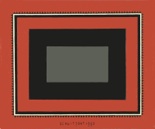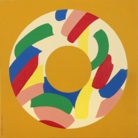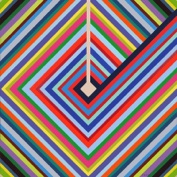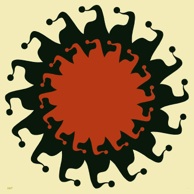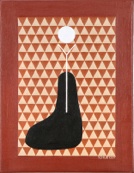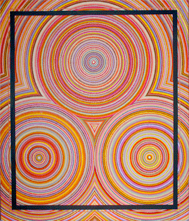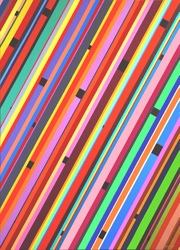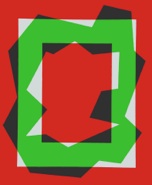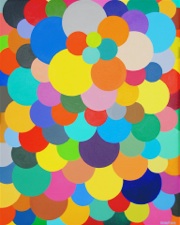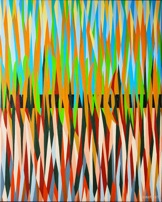


“It’s vitality, stupid!”
Meta-art. No development in the arts of the last 20 years seems as anti as this development. In any which way different from any of the other developments, it follows a course of its own. A course that seems to deny whatever there is happening in the contemporary arts. And this to such a degree, that it almost seems unworldly.
Meta-art is unworldly. Its audacious attempts to express what, actually, is absolutely impossible to express, leave the same kind of attempts of even such phenomenal artists like Vincent van Gogh and Mark Rothko way behind. Meta-art, compared with their art, enters a mental space so much more spacious than the mental space the art of these artists was already able to occupy, it seems to come from another world than the art of Van Gogh and Rothko comes form. Unworldly, indeed.
Reading this, one might easily get the impression that Meta-art is a completely intellectual happening, a kind of Wittgensteinian attempt to describe the world, our world, from the outside inward. And it is. And still, at the same time, it isn’t. Meta-art being the most paradoxical creative expression ever, is in the very first place a manifestation of sheer, anti-intellectual, vitality. No matter which Meta-painting, it always, always (!), radiates the dark, sparkling, tingling, pressing, breath-taking energy of life we, indeed, call vitality.
For those who take the trouble to take a good look at ‘the oeuvre’ of Meta-artist Marianne Schuit, it is obvious that the never-ending pictorial variety shown by the Meta-paintings of Marianne Schuit is, in itself, the clearest of signs of an unstoppable vitality.
For more than 20 years now, basically the same kind of pictorial language gives rise to images that, indeed, all share the same style, but are never the less more different from each other than whatever separate works of art of whatever artist. Every Meta-painting already being the highlight of all possible expressions within the boundaries of a certain ‘idea’.
No, this is not at all anti! This is the opposite of anti! This is: seeing, but most of all sensing, possibilities in all directions and on every possible level. This is constantly being aware of openness to all sides, notwithstanding the fact that you choose to chain yourself to a pictorial language that is highly characterized by restraint. This is utmost freedom realized within a state of ultimate bondage.
In art freedom always has to come from a loosening of the pictorial language. This is already the case in the great art of Rembrandt. As we have seen, in Meta-art the (unlikely…) opposite happens. Meta-art is, in every direction and on every level, fundamentally different from art, also in this. It becomes free where all art stays restricted. The supposed freedom of art like Cobra? Compared to the truly unlimited freedom of Meta-art, the artistic freedom of Cobra is way too much dependent on the pretty ordinary observation that freedom can only come from leaving formality behind. That is why Cobra was and is worldly. It was not at all able to cross the boundary beyond which freedom takes on a much grander, entirely paradoxical, posture. To many being an uplifting example of vitality, the vitality of Cobra compares to the vtality of Meta-art like a modestly glowing needle to an outrageous burning fire.
“It’s vitality, stupid!”


